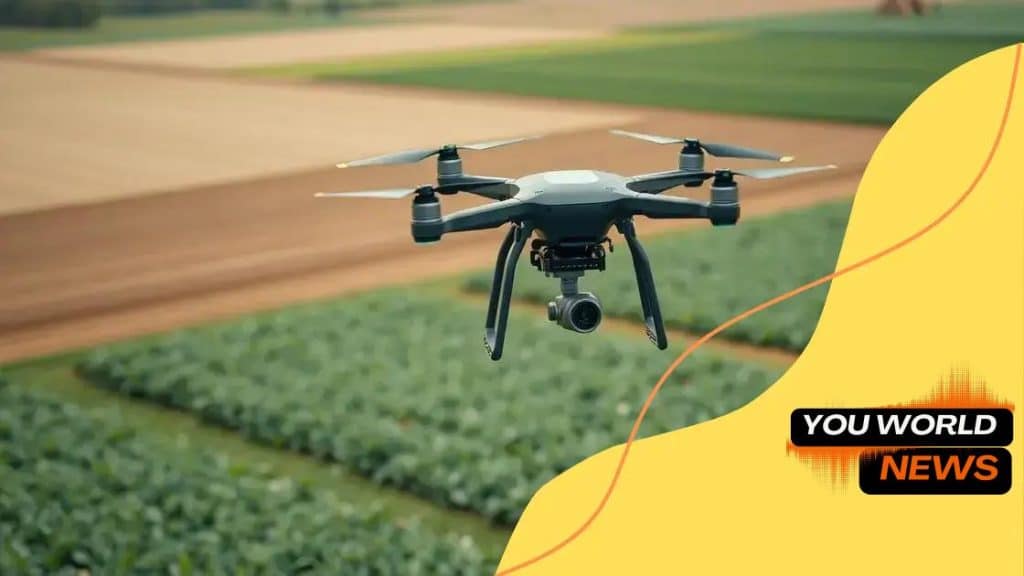The role of drones in precision agriculture: a game changer

The role of drones in precision agriculture enhances crop monitoring, soil analysis, and pest control, leading to increased efficiency and sustainable farming practices.
The role of drones in precision agriculture is becoming increasingly significant as farmers seek to optimize their yields and reduce waste. Have you ever wondered how technology transforms farming?
Understanding precision agriculture
Understanding precision agriculture is essential for modern farming. It represents a technology-driven approach to managing fields in a way that maximizes productivity while minimizing waste. This method uses data and technology to ensure farmers make informed decisions that can lead to better crop yields.
At the core of precision agriculture are tools that collect critical data. These instruments include sensors, GPS technology, and drones. By utilizing these tools, farmers can monitor their fields with a high level of detail. This process enables them to understand various aspects of their crops and soil, leading to smart farming solutions.
Key Components of Precision Agriculture
The main components that make up precision agriculture are:
- Data Collection: Gathering information from the field using technology improves decision-making.
- GPS Mapping: Accurately mapping the field allows farmers to analyze variations within their land.
- Variable Rate Technology: This technique allows farmers to apply inputs like seeds and fertilizers at different rates based on specific field needs.
- Aerial Imagery: High-resolution images captured by drones contribute to monitoring crop health effectively.
By integrating these components, farmers can tailor their practices to fit the specific requirements of their crops. Understanding variations in soil health can lead to targeted interventions, such as adjusting nutrient application rates or irrigation schedules. Moreover, monitoring crop health through data enables early detection of problems, which can prevent potential losses.
As farmers delve deeper into precision agriculture, they can significantly improve efficiency and sustainability. The insights gain from precise data help in reducing the use of chemicals and water, fostering a more eco-friendly approach. By making farming smarter, precision agriculture stands to revolutionize traditional practices while addressing food security. Furthermore, this approach not only benefits farmers financially but also creates a positive impact on the environment.
How drones enhance crop monitoring
How drones enhance crop monitoring is a critical aspect of precision agriculture. Drones provide farmers with the ability to observe their fields from above, collecting vital information that traditional methods may miss. This aerial perspective is invaluable for assessing crop health, making informed decisions, and improving overall productivity.
Drones equipped with advanced sensors can capture images and data that reveal important details about crops. These technologies can detect variations in plant health, soil moisture, and nutrient levels. As a result, farmers can identify areas in need of attention, allowing for targeted interventions and resource allocation.
Benefits of Using Drones for Crop Monitoring
Drones offer several advantages in crop monitoring. Some of these benefits include:
- Increased Efficiency: Drones can cover large areas quickly, saving time and effort compared to traditional scouting methods.
- Real-Time Data: Immediate feedback from drones helps farmers respond promptly to issues, preventing crop loss.
- Cost-Effective Solutions: Using drones can reduce the need for labor-intensive ground surveys and less efficient monitoring methods.
- Enhanced Accuracy: Drones provide precise data that can lead to better-informed decisions regarding crop management.
The imagery produced by drones can help farmers analyze crop conditions in detail. This includes monitoring plant growth patterns and detecting potential diseases before they spread. By regularly employing drone technology, farmers can ensure that their crops are receiving the care they need to thrive.
Furthermore, drones allow for effective communication with agricultural advisors. Sharing aerial images and data with experts can lead to collaborative solutions tailored to specific farm challenges. As technology continues to evolve, the role of drones in agriculture will only expand, providing opportunities for innovation and efficiency.
The impact of drones on pest control

The impact of drones on pest control is becoming increasingly important in modern agriculture. Drones are revolutionizing how farmers approach pest management. By using aerial technology, farmers can quickly identify and address pest infestations before they cause significant damage.
Drones equipped with advanced imaging and sensing technology allow farmers to detect pests from the air. This capability enables a more proactive approach to pest management, making it easier to monitor fields and assess areas that require attention. Early detection can be crucial, as it helps minimize pesticide use and reduces the risk of crop loss.
Benefits of Drones in Pest Control
There are several key benefits of utilizing drones for pest control:
- Targeted Applications: Drones can focus on specific areas of a field, delivering treatments exactly where they are needed, which helps in conserving resources.
- Cost Efficiency: By minimizing pesticide use and reducing labor costs, drones can lower overall pest control expenses.
- Improved Monitoring: Drones can provide real-time data on pest populations, allowing farmers to adjust their strategies quickly.
- Reduced Environmental Impact: Targeted treatments limit the amount of chemicals applied to fields, helping protect beneficial insects and the surrounding ecosystem.
Moreover, the ability of drones to cover large areas in a short amount of time makes them ideal for monitoring widespread pest issues. Regular assessments using drone technology can ensure that pest populations are kept in check without unnecessary pesticide applications.
Farmers can also utilize drone data to make informed decisions about pest management, leading to better crop yields. Working with agricultural scientists and advisors, they can develop integrated pest management strategies that are both effective and sustainable.
Drones and soil analysis benefits
Drones and soil analysis benefits play a significant role in enhancing agricultural practices. Farmers are now able to gather essential data about soil conditions quickly and efficiently. This information is indispensable for making informed decisions about crop management and resource allocation.
Using drones equipped with sensors can help analyze soil properties such as moisture levels, nutrient content, and pH balance. By flying over fields, drones can capture high-resolution images and collect data that reveal variations in soil health across large areas.
Advantages of Soil Analysis with Drones
Drones offer several distinct advantages when it comes to soil analysis:
- Time Efficiency: Drones can cover extensive areas in a fraction of the time it would take to conduct ground surveys, providing rapid results for farmers.
- Data Accuracy: High-quality imagery and precise sensor data ensure that farmers can trust the information they receive to make decisions.
- Cost-Effectiveness: Reducing labor costs and manual sampling, drones offer a more affordable method for comprehensive soil analysis.
- Enhanced Monitoring: Regular drone flights can monitor changes in soil health over time, guiding farmers in their long-term planning.
Moreover, understanding soil variability allows farmers to apply inputs like fertilizers and water more efficiently. By targeting specific areas that need attention, they can reduce waste and increase crop productivity. This personalized approach enhances sustainability and minimizes environmental impact.
Collaborating with agronomists and utilizing drone data can lead to the development of tailored strategies for soil health improvement. As technology advances, the capabilities of drones for soil analysis will continue to grow, making them an invaluable tool for modern agriculture.
Future trends in drone technology for agriculture
Future trends in drone technology for agriculture are shaping the way farmers approach crop management and sustainability. As technology continues to evolve, drones are becoming more sophisticated, providing insights that were once unimaginable in agriculture.
One of the most exciting advancements is the integration of artificial intelligence (AI) into drone systems. AI can analyze data collected by drones, helping farmers make quicker and more accurate decisions about their fields. This innovation allows for real-time monitoring and predictive analytics, changing the landscape of agricultural management.
Emerging Trends in Drone Technology
Here are some emerging trends that highlight the future direction of drone technology in agriculture:
- Advanced Sensors: The development of new sensor technologies allows drones to gather more detailed information about crops and soil conditions, improving data accuracy.
- Improved Battery Life: Longer-lasting batteries will enable drones to operate for extended periods, covering larger areas and reducing the need for frequent recharging.
- Automated Systems: Automation in drone operations will enhance efficiency. Farmers will be able to set flight paths and schedules without manual intervention.
- Data Integration: The integration of drone data with existing farm management systems will streamline processes, making it easier for farmers to access and analyze information.
As drones become more accessible, smaller farms will also benefit from these advancements. Cost-effective drone solutions will allow all types of farmers to utilize this innovative technology and improve their practices. This democratization of technology will lead to more sustainable farming methods and increased food production.
Moreover, the continued partnership between drone manufacturers and agricultural experts will push the boundaries of what is possible. By sharing knowledge and work together, they can tailor drone applications to specific agricultural needs, ensuring farmers maximize their benefits.
FAQ – Frequently Asked Questions about Drones in Agriculture
How do drones help in crop monitoring?
Drones provide farmers with high-resolution imagery and data, allowing them to assess crop health quickly and efficiently.
What are the benefits of using drones for soil analysis?
Drones can gather detailed soil data, improving accuracy and efficiency in assessing soil health, which helps farmers make informed decisions.
Can drones be used for pest control?
Yes, drones enable targeted pesticide applications, reducing chemical use and improving pest control effectiveness.
What future trends can we expect for drone technology in agriculture?
Future trends include advancements in AI integration, longer battery life, and automated systems that enhance efficiency and data analysis.





